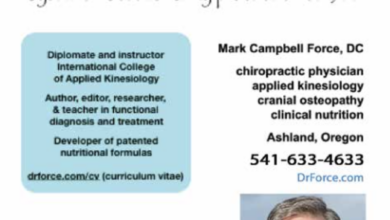Knee Pain: Answers Are Often Elsewhere
Knee pain can be a great and greatly frustrating mystery. Though a clear injury is often the cause, it’s not unusual for knee pain to start with no apparent cause.
It’s common for people to go from doctor to physical therapist to trainer and back to yet another doctor attempting to find a solution. And, medication is no long-term solution.
Your knee pain can result from dysfunction in virtually any area of your body and the cause is often missed by looking to, and treating, only the knee to solve the problem.
An Example of Finding Answers Elsewhere
I practice applied kinesiology – muscle testing as neurological exam – largely because it solved my wife’s chronic knee pain while I was still in chiropractic school. She’d had ongoing deep, aching pain in her knee with instability – feeling like it would give out when she put weight on it. It was unstable and would pop, clunk, and lock up on her walking and standing.
My wife was evaluated by a chiropractic intern who used applied kinesiology and determined that her knee problem was due to instability resulting from a weakness of a muscle that stabilized the knee. The intern went further explaining that the muscle had a reflex relationship to the gall bladder and that she needed to use a nutritional program to improve her gall bladder function. Sounded strange, but she followed the instructions. One week of the program and all the knee pains and instability was gone. And, never came back!
This had my attention – I had to learn how to do this! After learning and practicing applied kinesiology for over 30 years I’ve observed this kind of thing again and again.
The Many Potential Causes of Knee Pain
Clearly, knee pain can arise from the knee itself or from the pelvis, hip, or ankle and foot, neurological inhibition of muscles that support the knee, organ dysfunction that leads to reflex weakness of the muscles of the knee, or from biochemical stress that effects the control of inflammation and the repair of injured tissue (muscles, tendons, ligaments, cartilage, and connective tissue) of the knee.
Knee instability and stress commonly results from joint dysfunction of joints far from the knee. Disruption of normal mechanics of the ankle, for instance, can feed abnormal nerve signals to the brain that can result in “turning off” muscles that support the knee. In this situation, the knee pain will persist regardless of what treatment there is of the knee itself.
Solutions from Applied Kinesiology Methods
Applied kinesiology (AK) is a remarkably effective approach for discovering these potential reasons for knee problems and pain. This is especially true when manual muscle testing findings are integrated with orthopedic, neurological, and physical exams, lab findings, and imaging studies to identify the underlying cause for knee pain.


